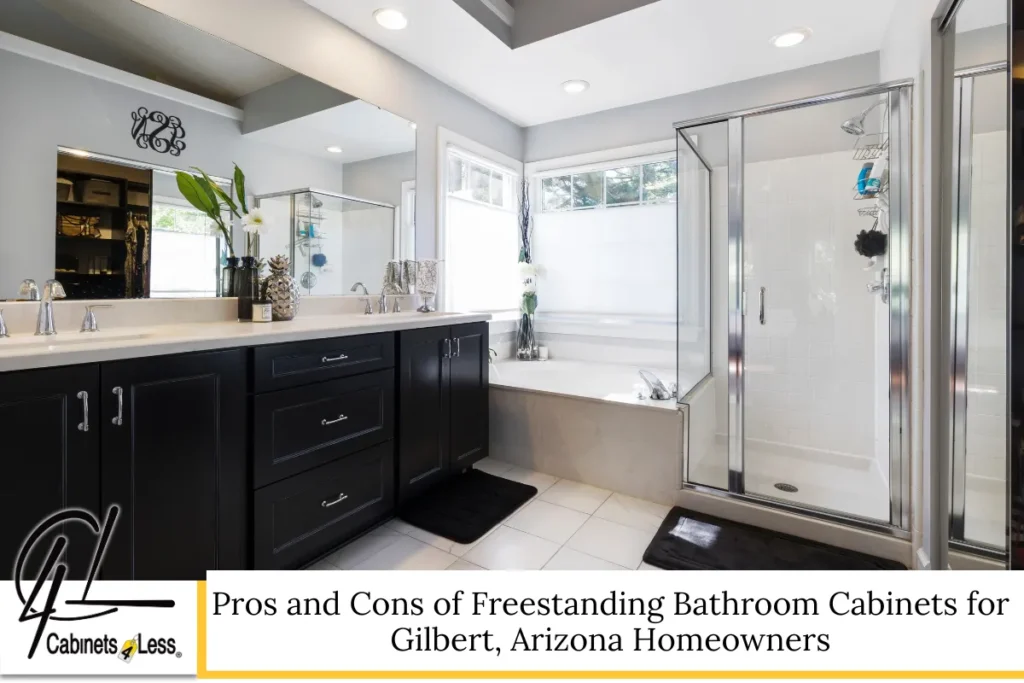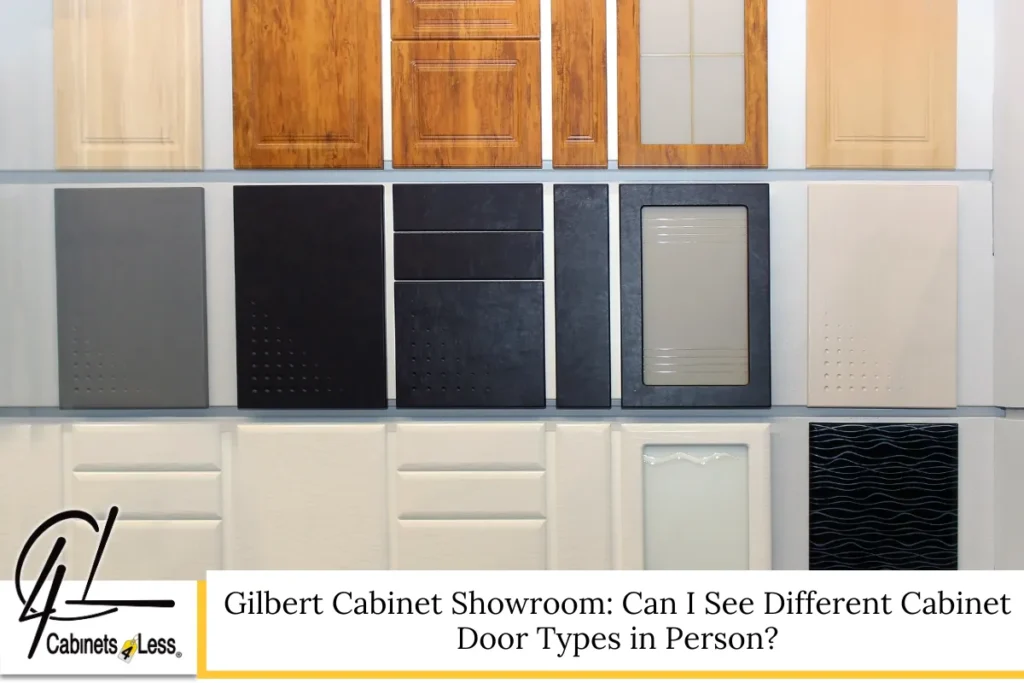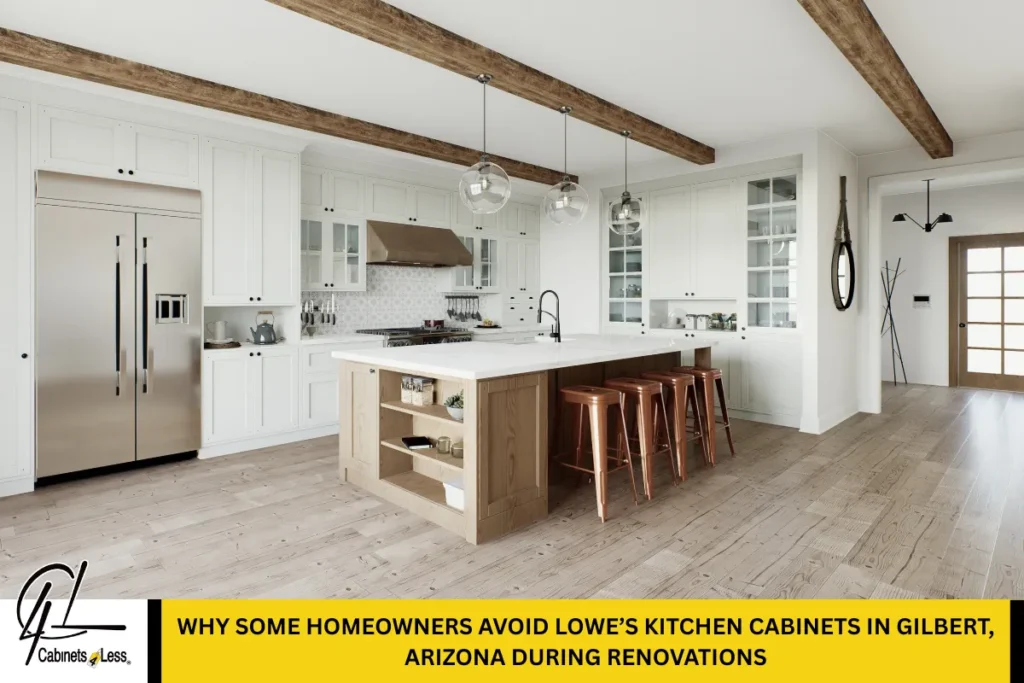Finding the perfect bathroom cabinets for your home renovation or remodel in Gilbert, Arizonacan be overwhelming, especially with so many design options on the market. One of the most debated choices is whether to install freestanding cabinets or opt for built-ins. Many homeowners face the dilemma of balancing bathroom cabinetry aesthetics with functionality, space, and cost. This becomes particularly challenging in homes where floor space is limited or where modern design preferences meet the need for practical solutions.
What seems like a small decision can create big impacts on your bathroom design. Poor choices can lead to restricted storage space, mismatched styles, or even unnecessary remodeling expenses. It’s essential to understand how different cabinet types interact with bathroom size, layout, and usage patterns.
In this article, we’ll explore the pros and cons of freestanding bathroom cabinets specifically for Gilbert, Arizona homeowners. Whether you’re updating a compact guest bath or undertaking a full master suite renovation, knowing the strengths and limitations of freestanding options can guide your decision—and help you find the right piece from a trusted cabinet store or cabinet showroom.
What Are Freestanding Bathroom Cabinets?
Defined by Flexibility and Function
Freestanding cabinets—also known as freestanding vanity cabinets—are units that rest directly on the floor without being mounted to the wall. They can include vanities with sinks, full-length doors, shelves, or drawers, and may or may not include a countertop and faucet. Unlike built-in vanities or floating bathroom vanities, freestanding models can be repositioned more easily and often suit a wider variety of design styles.
Common Types and Materials
- Wood options like maple, birch, and engineered panel design styles are common.
- Some incorporate mirrors, towel racks, or china hutch elements.
- They are often sold in modular sizes, allowing easier matching with existing bathroom cabinetry or custom cabinets.
Advantages of Freestanding Bathroom Cabinets
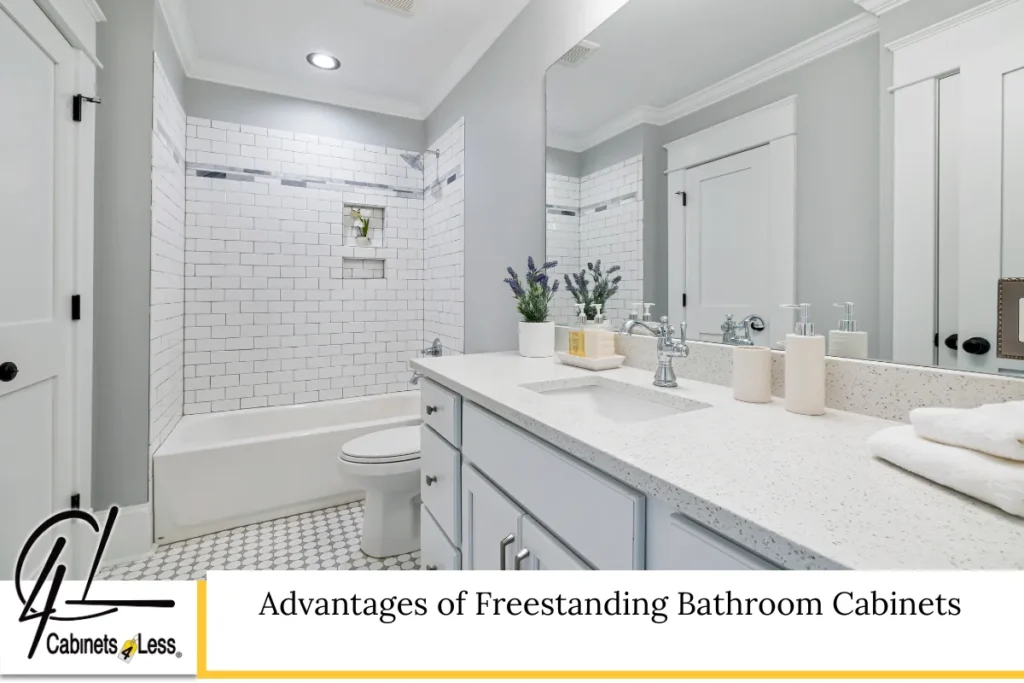
1. Flexible Placement and Easier Installation
Freestanding units do not require complex wall anchoring, making installation simpler and more affordable. In older homes or during quick remodeling projects, this can save time and labor costs. Because they’re not fixed, they also allow for future reconfiguration or even replacement without major renovation.
2. Ideal for Smaller Bathrooms
Many small bathroom ideas revolve around maximizing mobility and functionality. Freestanding options often make better use of irregular spaces and can be chosen to suit various bathroom sizes. A wall-mounted vanity or floating vanity cabinets may work well in tight areas, but freestanding styles still allow extra storage space beneath the sink.
3. Variety in Design and Customization
From traditional to modern aesthetics, freestanding models are available in a wide array of panel design styles, colors, and materials. Whether you prefer a rustic wood look or sleek contemporary surfaces, there’s likely a freestanding option that matches your interior design aesthetic.
4. Easy Access for Repairs and Upgrades
Since freestanding models are not embedded into the walls or flooring, plumbing and hardware repairs are easier to access. Additionally, these cabinets allow for easier upgrades to faucets, sinks, or countertops in the future.
Drawbacks Homeowners Should Consider
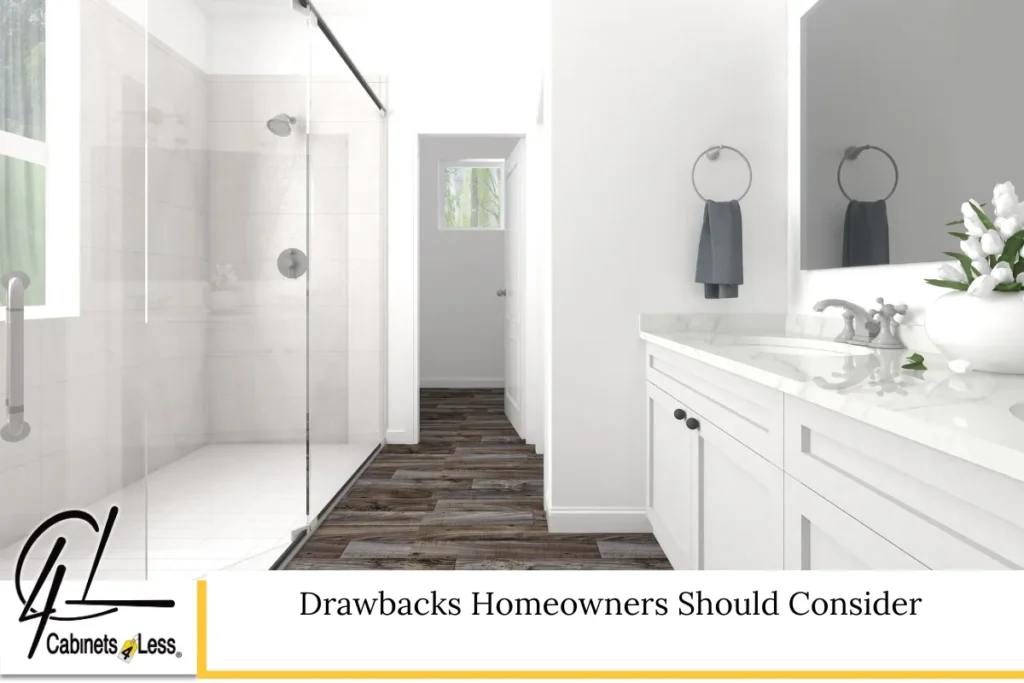
1. Limited Storage Compared to Built-Ins
While versatile, freestanding units may lack the full storage space capabilities of custom built-in units or floor-to-ceiling cabinetry. Homeowners who need extensive shelving or enclosed compartments for cleaning supplies or linens may find freestanding designs limiting.
2. Less Seamless Appearance
If your bathroom design emphasizes minimalism and integrated finishes, freestanding furniture may disrupt the visual flow. Unlike floating vanities or built-in vanities, freestanding options don’t always match the clean lines preferred in modern aesthetics.
3. Can Impede Floor Cleaning
With more contact points on the floor, freestanding models may collect dust and grime underneath or around their base. This makes cleaning & maintenance slightly more involved than wall-hung units.
4. Might Not Suit Everyone’s Needs
For households dealing with mobility issues, built-ins offer better height control and ergonomic comfort. Freestanding pieces, while stylish, may not be optimized for accessibility or safe reach, especially in compact bathrooms.
Who Should Choose Freestanding Bathroom Cabinets?

Best Fit for Remodelers, Renters, and Flexibility Seekers
Freestanding cabinets are often ideal for:
- Gilbert homeowners remodeling on a budget or timeline.
- Property investors looking to upgrade bathrooms without structural changes.
- Families who anticipate layout changes over time.
- Residents needing flexible use of floor space and adaptability.
Choosing the Right Style for Your Bathroom
Aesthetic Considerations
- Traditional styles: opt for wood or vintage panel design styles.
- Modern bathrooms: lean toward minimalist floating bathroom vanities or smooth-faced freestanding options with open shelving.
Functional Features to Look For
- Sinks: integrated vanities with sinks or modular sink tops.
- Countertops: choose moisture-resistant surfaces.
- Hardware: easy-to-clean, ergonomic drawer pulls.
- Mirrors: integrated mirrors or matching wall pieces enhance utility.
- Towel Racks: look for units with side bars or hooks for added functionality.
Maintenance and Durability in the Arizona Climate
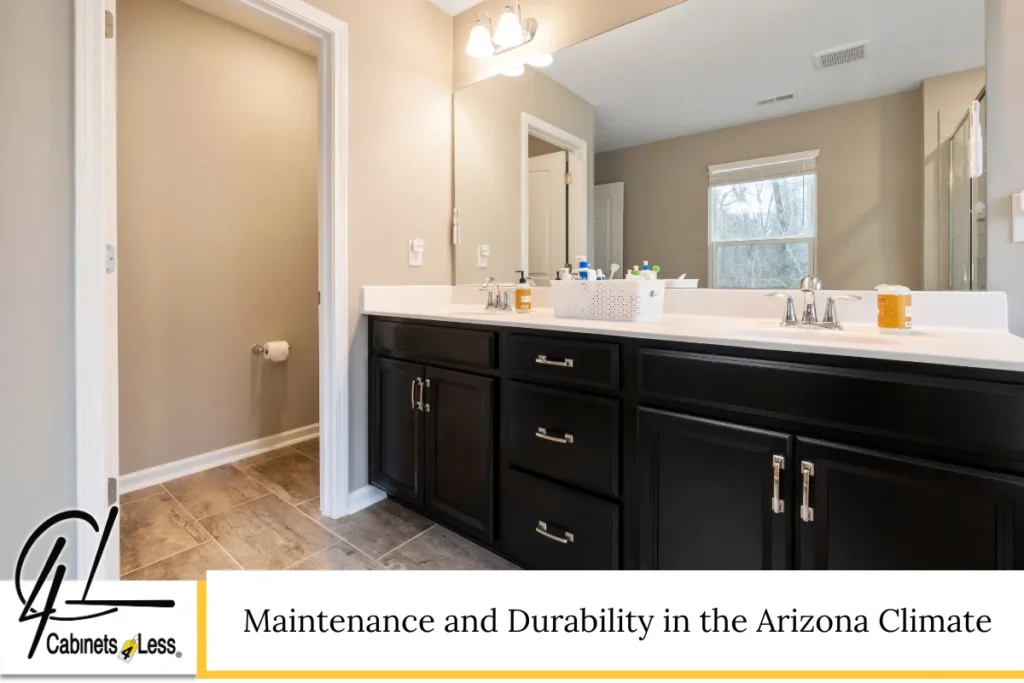
Climate Considerations in Gilbert
High heat and occasional humidity can affect materials like natural wood. Opt for maple, birch, or treated panels that resist warping. Always inspect product quality and construction from reliable cabinet manufacturers.
Tips for Long-Term Maintenance
- Avoid direct water pooling under freestanding units.
- Use moisture-absorbing mats to reduce floor damage.
- Regularly clean gaps around base to avoid dust buildup.
Exploring Cabinet Options in Local Showrooms
Visiting a cabinet store or cabinet showroom in Gilbert lets you see the differences between freestanding vanity cabinets, built-in vanities, and other models firsthand. Always measure your bathroom size and bring inspiration photos or layout sketches. Experienced professionals can help match your preferred design style to your actual space usage needs.
Gilbert Bathroom Cabinets — C4L Cabinetry

Looking for high-quality bathroom cabinets in Gilbert, Arizona that blend beauty and function? C4L Cabinetry offers a diverse range of styles, including freestanding cabinets, vanities with sinks, and custom built-in units. Our expert staff will help you explore modern and traditional design styles to match your interior design aesthetic.
Visit our showroom or call us at (480) 892-5126 to schedule a free design consultation. We serve Gilbert and surrounding communities, offering top-tier products from leading cabinet manufacturers. Whether you’re remodeling or building new, trust us to deliver high-quality bathroom cabinetry tailored to your needs.
Don’t wait—transform your bathroom with C4L Cabinetry’s premium selection and personalized service. Call today or fill out our contact form online to get started.
Frequently Asked Questions About Freestanding Bathroom Cabinets
1. Are freestanding bathroom cabinets more affordable than built-in options?
In most cases, yes. Freestanding cabinets are generally less expensive to install due to fewer labor and infrastructure requirements. They don’t require the same wall anchoring or floor alterations that built-ins do, which can save hundreds in professional fees. That said, premium materials and custom designs can still carry a higher price tag. Always consider your overall bathroom design and budget when choosing between types.
2. What are the best materials for freestanding vanity cabinets in Arizona?
In Gilbert’s warm climate, moisture and heat resistance are key. Choose materials like maple, birch, or engineered panels with sealed finishes. Avoid untreated or low-density woods that can warp or degrade. Quality cabinet manufacturers will often label their products as water-resistant or include protective coatings. Also, look for hardware that resists rust or corrosion, especially near sinks and faucets.
3. Can I install a freestanding vanity myself?
Yes, many freestanding units are designed for DIY installation. If you have basic carpentry skills, it’s possible to install a freestanding vanity cabinet, especially if your plumbing is already in place. However, if your installation involves modifying water lines, securing countertops, or replacing sinks, hiring a professional can prevent costly errors. Also, make sure your floor is level to avoid wobbling or tilting.
4. Do freestanding vanities work well in small bathrooms?
Absolutely. Freestanding units are often recommended in small bathrooms where wall space may be restricted. They come in a range of widths and depths, helping maximize storage space without overwhelming the room. Choose models with vertical full-length doors, open shelves, or built-in towel racks to further enhance function. The key is balancing scale and layout so the cabinet feels integrated and not oversized.
5. How do freestanding cabinets compare to floating vanity cabinets?
Floating vanities are mounted on the wall, offering more visual openness and easier floor access, which is great for cleaning & maintenance. However, they may require more extensive installation and are less flexible to reposition later. Freestanding models, while taking up more floor contact, provide more traditional appeal and are often more versatile during remodeling. Your choice will depend on your interior design aesthetic, layout, and usage needs.
Read Why Wall-Mounted Bathroom Cabinets Are Gaining Popularity in Gilbert, Arizona



